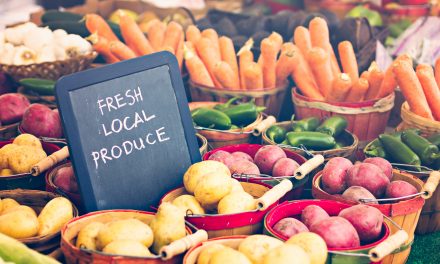What are whole foods and what is a whole-food lifestyle?
In many of my articles I talk about eating a whole-food diet or following a whole-food lifestyle and how doing so will improve your overall health. Feeding your body the best quality of fresh fruits, vegetables, and cuts of meats, will give you a solid platform to support you on the path to living a healthier life.
Whether you’re looking to gain more energy, get in shape, or improve immunity and digestion making the transition to food choices that support the body and mind is the biggest gesture of self-love you can provide.
What is a Whole-food Lifestyle?
The easiest and most simple explanation of “whole foods” are foods in their purest form. One ingredient foods, eaten in the closest form of its natural state. There are many types of interesting and beautiful food available to us these days from the farmer’s markets and grocery stores. We really have no excuse not to try something new each week. Getting a variety of colorful foods will increase the availability of necessary vitamins and minerals. If you have been eating mostly processed, convenience, and fast food this will be something to slowly transition to. Making long term changes seem to have a more lasting effect when done slowly with purpose.
Here are a few of my favorite whole foods to keep on hand. These are a part of my weekly grocery list:
- Green Leafy Vegetables—Full of phytochemicals and chlorophyll these fiber-rich vegetables are a great staple. Spinach, kale, mustard greens, swiss chard, and watercress are excellent choices for making salads, smoothies, or juicing. Blending several varieties in one dish can really wake up your taste buds and add some excitement to your plate.
- Low Glycemic Vegetables—These vegetables include artichokes, bell peppers, celery, mushrooms, carrots, onions, peas, zucchini, green beans, and summer squash. Low glycemic vegetables have a lower risk of spiking your blood sugar, which increases your cravings for more sugary foods.
- Starchy Vegetables—Beets, parsnips, white potatoes, pumpkin, sweet potatoes, acorn squash, and yams are still very nutritious foods to eat. Roasted, baked, or added to soups, these vegetables can bring texture and color to any dish.
- Fruits—Apricots, apples, bananas, berries, cherries, grapes, kiwi, pineapple, citrus fruits, and melon are great additions to salads or eaten alone as a fiber-rich snack. Most fruit choices are a great source of antioxidants, phytochemicals, and fiber, providing a slow release of natural sugars for the body to use as an energy source.
- Proteins—Wild-caught fish, eggs, organic raw dairy, kefir, yogurts, cheese, beans, legumes, nuts, seeds, and nut butters. When choosing cuts of poultry and red meats be sure to source the highest quality of meat you can afford. Organic, grass fed, and hormone-free is the way to go and becoming more available in grocery stores.
- Grains—Grains are recommended in moderation and sticking to low glycemic ancient grains that are gluten-free will be more nutrient dense and low inflammatory. Quality options to source are amaranth, brown rice, buckwheat, millet, teff, and quinoa.
- Healthy Fats—Over the last few decades fat has gotten a bad rap. But healthy fats such as omega3’s are essential to the proper function of every organ, especially our cardiovascular system, brain, and hormone control. We need a healthy balance of the right cholesterol and healthy fats to keep us at a healthy weight and regulate hormones. Plus, fat makes food taste good. Manufacturers who sell fat-free processed foods are often replacing the fat with sugar. This causes more harm than good. Quality sources of fats include avocados, nuts, seeds (such as flax, chia, hemp, pumpkin, and sunflower), wild-caught fish (especially salmon and sardines), ghee, grass-fed butter, and pastured eggs.
- Herbs and salt—Don’t forget the powerful effects of using herbs and non-iodized salt with your meals. They can enhance the flavors of many whole-food meals and be a great source of vitamins and minerals.
- Water—While food is important, it is especially important to drink plenty of clean drinking water. Staying hydrated is a key player in a whole-food, nutrient-dense lifestyle. Many of these foods are high in fiber and more water is needed to properly move the fiber through our digestive tract. Drinking water is crucial for healthy elimination of unnecessary burdens on the body.
Making the decision to move toward a whole-food lifestyle can take time and practice, especially if you have a busy family. Make small changes when you can and be kind to yourself. Get your family involved in making some new choices for meals and snacks.
Here is an easy recipe for homemade grain-free granola that my family enjoys regularly as a snack or topping for yogurt. It is low inflammatory and gluten-free, so it fits the needs of many with great flavor and crunch.
Ingredients
- 1/2 cup of pumpkins seeds
- 1/4 cup of chia seeds
- 1/3 cup of sliced almonds
- 1/2 cup shelled sunflower seeds
- 3 tablespoons of whole flaxseed
- 1/2 cup pecans
- 1/2 cup shredded coconut, unsweetened
- 1/3 cup of grade A maple syrup. Not pancake syrup.
- 1/4 cup coconut oil, melted
- 1 teaspoon of cinnamon, nutmeg, or cardamom, optional
Instructions
- Preheat oven to 325º F.
- In a large bowl, add all the nuts, seeds, and shredded coconut. Mix well.
- In a small bowl melt coconut oil and add the maple syrup to blend.
- Pour the oil and syrup over the nut and seed mixture and blend well.
- Line a cookie sheet with parchment paper and pour the mixture out and spread evenly over the cookie sheet.
- Bake for 15 minutes. Remove and stir granola spreading evenly again, baking for additional for 5-8 minutes.
- Remove and allow to cool.
- Store in an airtight container on the counter for a couple of weeks or refrigerate. Enjoy!!
Best of luck starting and maintaining your whole-food lifestyle. And remember to Live Your Value, one choice at a time!










